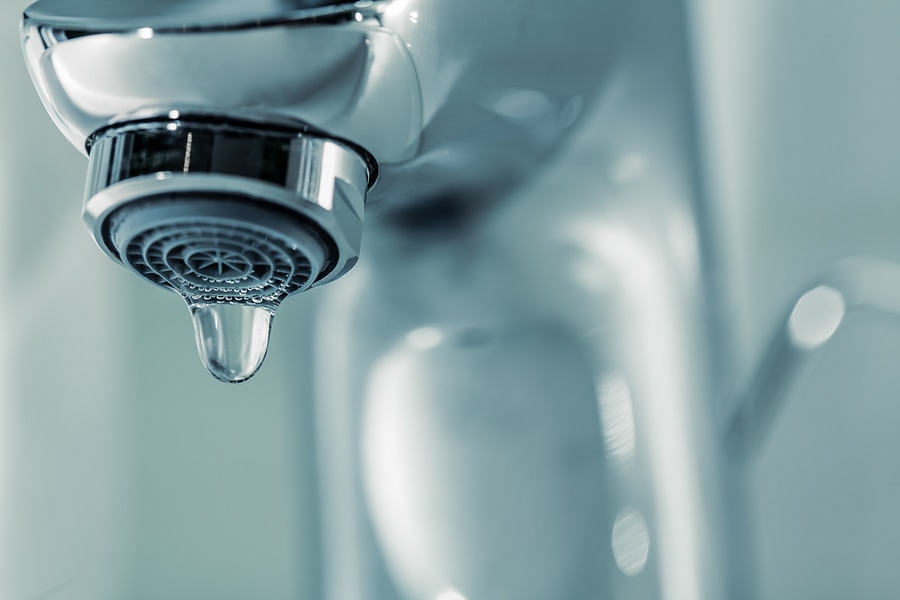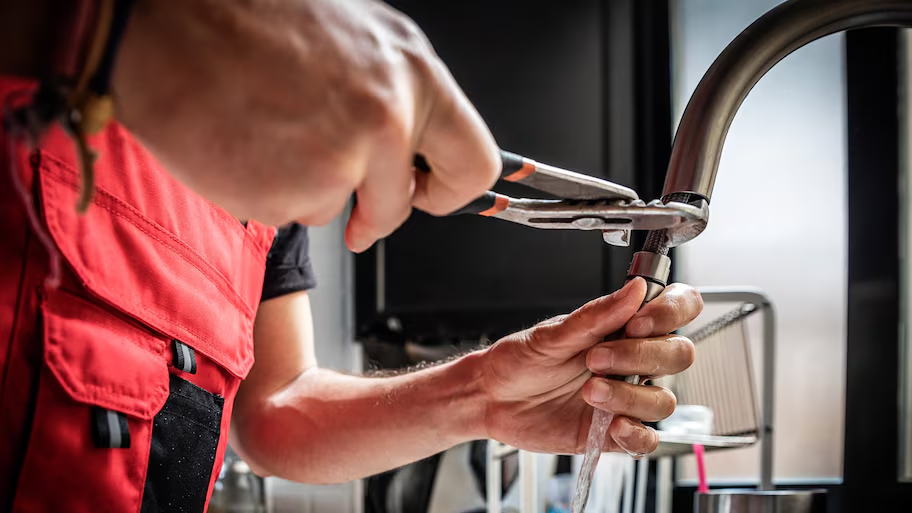Exploring the Importance of Repairing a Dripping Faucet
Exploring the Importance of Repairing a Dripping Faucet
Blog Article
This post following next relating to Why It's Important to Fix Leaky Faucets is unquestionably attention-grabbing. Read it for yourself and figure out what you think of it.

Leaking taps may seem like a minor inconvenience, but their effect goes beyond just the inconvenience of the noise. From drainage to incurring unneeded financial expenses and health and wellness threats, neglecting a dripping tap can result in different repercussions. In this post, we'll delve into why it's critical to address this typical family concern quickly and effectively.
Waste of Water
Environmental Effect
Trickling faucets contribute significantly to water wastefulness. According to the Epa (EPA), a solitary faucet trickling at one drip per secondly can lose greater than 3,000 gallons of water annually. This not just pressures water sources but also influences ecological communities and wildlife depending on them.
Financial Prices
Increased Water Costs
Past the environmental impact, dripping taps can blow up water expenses considerably. The built up waste with time equates into greater utility costs, which can have been avoided with timely repairs.
Potential Residential Or Commercial Property Damages
Furthermore, long term trickling can lead to harm to fixtures and surface areas surrounding the tap. Water build-up can cause discoloration, corrosion, and also structural concerns if left neglected, resulting in extra fixing costs.
Health Issues
Mold And Mildew and Mold Development
The consistent visibility of moisture from a leaking tap develops a suitable setting for mold and mildew and mold development. These fungis not just endanger interior air top quality but also position health and wellness dangers, particularly for individuals with respiratory conditions or allergies.
Waterborne Conditions
Stationary water in trickling taps can come to be a breeding place for germs and other pathogens, raising the threat of waterborne illness. Pollutants such as Legionella bacteria thrive in stationary water, potentially resulting in serious illnesses when consumed or inhaled.
Do it yourself vs. Specialist Repair service
Advantages and disadvantages of DIY Fixing
While some might attempt to fix a trickling faucet themselves, DIY repairs come with their very own collection of difficulties. Without correct expertise and devices, do it yourself efforts can intensify the concern or bring about incomplete repairs, extending the problem.
Benefits of Hiring an Expert Plumber
Employing a professional plumber makes certain that the underlying root cause of the trickling faucet is dealt with effectively. Plumbings have the expertise and equipment to identify and fix faucet problems effectively, conserving time and decreasing the risk of further damages.
Step-by-Step Overview to Repairing a Dripping Tap
Tools Needed
Prior to trying to repair a trickling faucet, gather the essential tools, consisting of an adjustable wrench, screwdrivers, substitute components (such as washers or cartridges), and plumber's tape.
Common Tap Issues and Their Solutions
Determine the kind of faucet and the certain problem triggering the drip. Usual issues consist of worn-out washing machines, corroded valve seats, or defective O-rings. Describe manufacturer instructions or online tutorials for step-by-step advice on repairs.
Preventive Measures
Normal Upkeep Tips
To prevent dripping taps, execute routine maintenance such as cleansing aerators, examining for leakages, and changing damaged parts immediately. In addition, consider installing water-saving gadgets or updating to much more effective components.
Significance of Prompt Repairs
Attending to trickling faucets as quickly as they're discovered prevents more water wastage and prospective damages, eventually saving both water and cash in the future.
Influence On Residential Or Commercial Property Value
Perception of Well-Maintained Residential Property
Keeping a building in good condition, consisting of addressing maintenance concerns like leaking taps, improves its viewed worth and charm among potential customers or tenants.
Impact on Resale Worth
Features with properly maintained plumbing components, including taps, command higher resale values in the realty market. Addressing dripping faucets can add to a positive impact during home examinations and negotiations.
Ecological Responsibility
Private Contribution to Preservation
Taking duty for repairing trickling taps aligns with wider initiatives towards water preservation and environmental sustainability. Every individual's actions jointly make a significant influence on maintaining valuable sources.
Lasting Living Practices
By prioritizing timely fixings and taking on water-saving habits, individuals add to sustainable living techniques that profit both existing and future generations.
Conclusion
Attending to a trickling faucet surpasses mere convenience; it's a necessary step toward conserving water, decreasing economic prices, and securing wellness and residential or commercial property. Whether with do it yourself fixings or professional assistance, acting to take care of dripping faucets is a small yet impactful way to promote accountable stewardship of sources and contribute to a healthier, a lot more lasting future.
How to Fix a Leaky Faucet: Step-by-Step Repair Guide
A leaky faucet may seem like a simple annoyance, but if it's not fixed promptly, that leak could cost hundreds to potentially thousands. From water damage to mold, mildew, and high water bills, even a tiny leak can be catastrophic if left unattended. Damage like this can even affect the overall value of your home, so it's important to take the right approach for leaky faucet repair. You may need the help of a plumber in some cases, but we've got a few tips you can try on how to fix a leaky faucet before calling the pros.
Four Faucet Types
When you're learning how to fix a leaky faucet, the first step is knowing what kind of faucet you're working with! There are four common types.
Cartridge Faucets
Cartridge faucets come in one- or two-handled varieties. In one-handled cartridge faucets, hot and cold water combines in a single cartridge. In the two-handled versions, hot and cold water are controlled separately and mixed in the faucet.
Ball Faucets
Ball faucets have a single lever you push up and down to adjust the pressure and rotate to change the temperature. A slotted metal ball controls the amount of water allowed into the spout.
Compression Washer Faucets
They're the oldest type of faucet, but they're still used in many homes — especially older ones. Compression faucets have two separate handles that, when turned, raise or lower the washer that seals a water valve. This valve stops water from flowing through the faucet when it is turned off.
Disc Faucets
Disc faucets rarely need to be repaired due to their maintenance-free design. The water flow is controlled by two discs — the upper one raises and lowers against a fixed lower disc, creating a watertight seal. If your disc faucet starts leaking, you may need to replace the seals or clean residue buildup from the inlets.
Fixing a Leaky Faucet
Step 1: Turn Off the Water
Whether you're learning how to fix a leaky bathtub faucet or how to fix a leaky kitchen faucet, always turn off the water supply to your working area when you're fixing a leak. The last thing you want is a flood added to your list of things to fix.
Look for the shutoff valves below your sink or around the tub and turn them clockwise to stop the water flow. If your faucet doesn't have shutoff valves, you may need to turn off the water for the whole house. Check to make sure it's off by turning the faucet on. If nothing comes out, you're ready to start the repair.
Step 2: Take Apart the Faucet
How you disassemble your faucet depends on the type of fixture you have. You can use a flathead screwdriver to remove the caps on top of the handle or handles for cartridge and compression faucets. Inside, you should see handle screws. Unscrew these with a screwdriver to remove the handle.
Disc- and ball-style faucets will typically have an inlet screw near the handle, and removing that will reveal the interior of the faucet.
Detach the Valve Stem
For cartridge- and compression-style faucets, you'll see the inner valve stem or cartridge once you remove the faucet handles. If you have a compression faucet, unscrew the brass valve stem. If you have a cartridge faucet, pull out the cartridge. If your cartridge has been in place for a while, it may require some tools or extra force to remove it due to mineral deposits.
Examine and Replace Parts
Once you've removed the parts, check them out to confirm what needs to be replaced. You may see corroded rubber washers, O-rings, stems, or cartridges. On a ball-style faucet, check the seats and springs for damage.
If you need to repair a leaky disc faucet, check the inlet and seals on the lower disc.
Once you determine what parts must be replaced, visit your local hardware store. Bring the damaged parts with you to ensure you can purchase the correct components to replace them.
Clean Valves and Faucet Cavity
If you've removed a stem or cartridge, you may notice mineral buildup in the faucet's threads. Use white vinegar to clean the valve seat by soaking it for a few minutes, then scrub it away with a soft toothbrush and rinse with warm water. You can also clean the interior of the faucet in the same way.
Reassemble the Faucet
Once your faucet is cleaned and the required parts have been replaced, it's time to reassemble it. Put the pieces back together and slowly turn the water supply back on. Doing this slowly is crucial because too much initial water pressure can damage the new hardware you've just installed.
https://homewarranty.firstam.com/blog/how-to-fix-leaky-faucet

As a keen reader about Why Are My Faucets Dripping (And Can I Fix It Myself)?, I thought sharing that post was really useful. Sharing is caring. Helping others is fun. Thanks for taking the time to read it.
Report this page